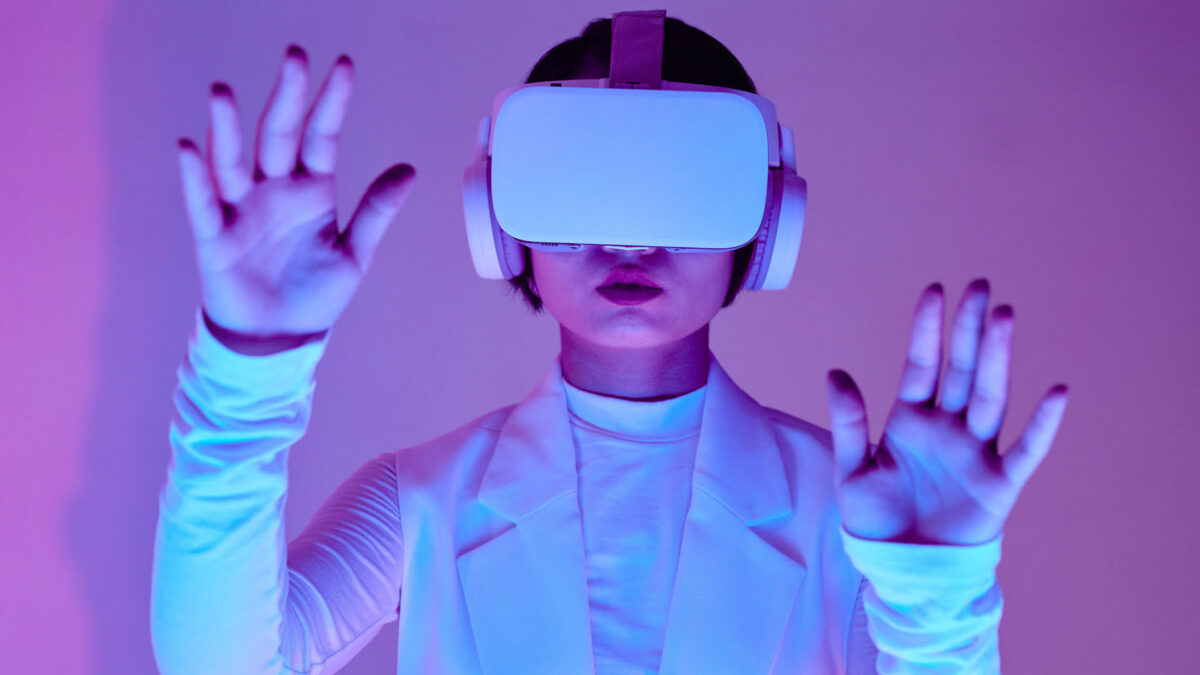MicroLED and the "green gap": Possible breakthrough for XR displays

Researchers are developing a new manufacturing process for MicroLEDs for VR and AR headsets. Is a new display generation on the horizon?
The University of Michigan has announced a breakthrough in MicroLED research. It has succeeded for the first time in producing high-performance and highly stable green micro-LEDs with dimensions of less than one micrometer on silicon. This is expected to benefit mainly ultra-high resolution color displays. Difficulties in manufacturing could also soon be solved by a new process.
MicroLED: The future of mixed reality displays?
Light-emitting diodes, or LEDs for short, have come a considerable way since their introduction in the seventies. Initially used only as signal lamps because they could hardly display colors, light-emitting diodes have been increasingly establishing themselves in everything to do with lighting for about twenty years. The reason for the breakthrough was the introduction of efficient blue and white LEDs in the mid-2000s and the broad color spectrum that could be achieved with them.
Today, LEDs are installed in almost every screen and, in their more advanced form of MicroLEDs, are considered the future of mixed reality headsets. There, they are supposed to provide a better experience than LC or OLED displays with higher pixel density, faster response time, richer contrast and more intense brightness.
High costs in production have so far hampered the breakthrough
The tech industry is therefore investing a lot of money in MicroLEDs and giants such as Apple, Meta or Google are swallowing up MicroLED start-ups or securing exclusive licensing rights to their products. However, MicroLEDs (still) have a disadvantage: The super displays are difficult to manufacture for mixed reality devices.
Individual pixels on MicroLEDs reach sizes of less than one micrometer, which requires complex production processes. According to experts, more than fifty percent of all displays produced are defective, which results in additional costs.
For mixed reality applications, MicroLEDs must therefore be tiny yet highly stable and efficient. To be used in mobile VR headsets, low-power consumption is also important. To achieve this, MicroLEDs are manufactured on silicon wafers.
MicroLEDs for mixed reality headsets: Difficult manufacturing and "green gap"
In contrast to conventional sapphire wafers, silicon achieves, among other things, better scalability and integration into small devices. However, there is also a catch here: the use of silicon leads to a mismatch of the lattice parameters because the crystal structure is different.
According to Professor Zetian Mi of the University of Michigan, it has been possible to make very efficient large-area blue LEDs and large-area red LEDs, but it is extremely difficult to make very efficient large-area green LEDs. This is known as the "green gap," he said. However, he said, shrinking a device to about one micrometer is a major challenge in any case.
First high-performance and highly stable green MicroLEDs on silicon wafers
To overcome these challenges, Mi and his research team developed green MicroLEDs made of submicron III nitride. This uses arrays of nanowires, each only 100 to 200 nm in diameter and spaced a few nanometers apart.
“We use the nanowire structure to filter out the threading dislocations caused by lattice mismatch between the nitride materials and the silicon substrate,” said Yuanpeng Wu, the first author of the paper. The result is the first high-performance and highly stable green MicroLEDs on silicon.
Researchers raise prospect of more efficient fabrication of MicroLEDs
“It’s very important to have a stable emission of all three colors – red, green, and blue – to achieve a high-quality display,” Mi said. “And it’s especially important to grow these small, stable LEDs directly on the silicon wafer for the future manufacturing and integration process.”
Back in May of this year, the researchers succeeded in developing red MicroLEDs with a surface area nearly three times smaller than that of previous models.
So all that's missing is blue to achieve what is probably the most important advance in LED development since the mid-2000s.
"The approach we developed for green readily applies to blue," Mi said. "The next step is integrating directly on the silicon wafer without transferring, which would be a huge improvement for manufacturing."
Note: Links to online stores in articles can be so-called affiliate links. If you buy through this link, MIXED receives a commission from the provider. For you the price does not change.